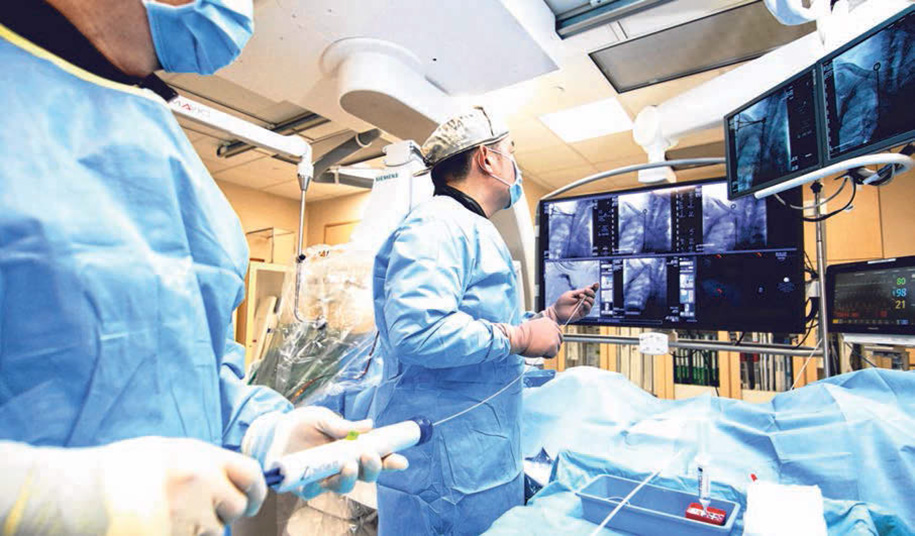The Straits Times (12 September 2018) - A local hospital is employing a ground-breaking technique that is making life easier – and safer – for many dialysis patients.
It addresses a particularly risky aspect of dialysis – the fact that a single vein in the neck becomes the only lifeline for some patients.
If this vein gets blocked, doctors must insert a groin catheter, which is notoriously prone to infection and other problems.
Tan Tock Seng Hospital (TTSH) has been using a new method since July to overcome this problem. It allows dialysis to continue through an opening in the neck, even if the veins there are blocked.

TTSH’s Associate Professor Pua Uei says the new procedure, done under X-ray guidance (above), is very safe. It addresses a particularly risky aspect of dialysis – the fact that a single vein in the neck becomes the only lifeline for some patients. The procedure has been carried out on three elderly patients so far.
Associate Professor Pua Uei, a senior consultant in TTSH’s diagnostic radiology department, told The Straits Times yesterday: “This is one of the safest and quickest ways to salvage something that we had no good answers to before.”
The new technique involves threading a fine, sharp wire up a different vein until it reaches the blocked area. The wire is then pushed through the person’s body until it exits near the collarbone. A regular catheter is then attached so that dialysis can take place.
“Under X-ray guidance, this is actually very safe,” Prof Pua noted.
TTSH is the first hospital in Asia to perform this surgery. It is done under local anaesthesia and takes around 30 to 45 minutes. The procedure has been carried out on three elderly patients so far.
A person is diagnosed with kidney failure here every five hours.
Figures in 2016 show there were more than 6,600 dialysis patients in Singapore.
Although most patients who undergo blood dialysis do so through a vein in their arms, around 20 per cent have to use long-term neck catheters.
TTSH doctors insert over 400 such catheters a year. But around 40 per cent of people with them eventually develop blocked veins.
“When that happened, we used to have to move on to the next vein... and eventually we would run out of veins in the neck we could use,” Prof Pua said.
He added that the new technique also helps to improve the quality of life for many patients: “Groin catheters are a lot worse for comfort, and it’s harder for patients to maintain cleanliness as well.”